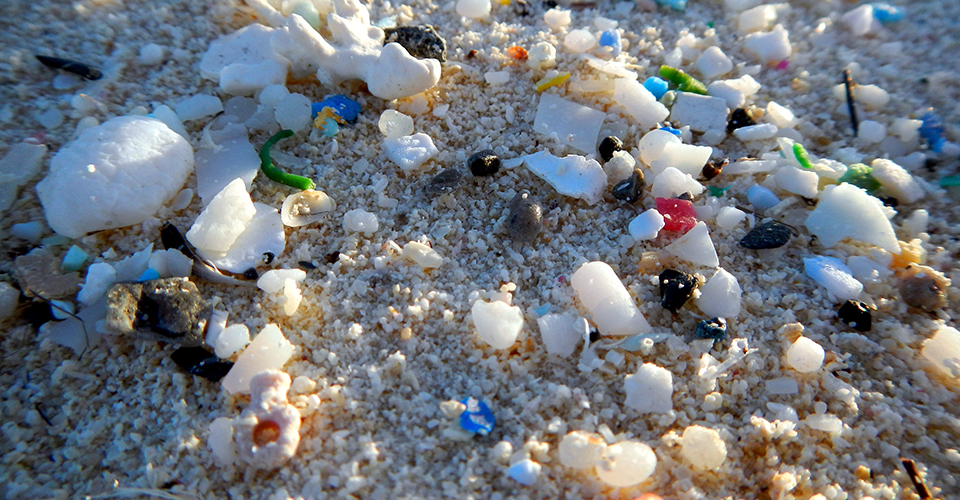Welcome to Facts Vibes! Explore the eye-opening world of microplastics with us. Discover fascinating facts, from their impact on marine life to their presence in everyday items. Let’s delve into the intriguing realm of these tiny but significant particles.
The Impact of Microplastics: Unveiling the Facts
The impact of microplastics on the environment and human health is a pressing issue that demands attention. These tiny plastic particles, measuring less than five millimeters in size, are ubiquitous in the environment, from the depths of the ocean to the air we breathe. Research has shown that microplastics can have detrimental effects on marine life, as well as potentially posing health risks to humans.
In the context of marine ecosystems, microplastics can be mistaken for food by marine animals, leading to blockages in their digestive systems, malnutrition, and even death. Moreover, these particles have the potential to absorb and concentrate toxins from the surrounding environment, which can then be passed up the food chain. This bioaccumulation of toxins poses a significant threat to the health of marine organisms and ultimately to humans who consume seafood.
Furthermore, the presence of microplastics in the air and water sources raises concerns about their impact on human health. Studies have found that microplastics can infiltrate the human body through ingestion and inhalation, with potential effects on internal organs and bodily functions. The long-term consequences of this exposure are not yet fully understood, but there is growing concern about the potential health implications.
Addressing the issue of microplastics requires concerted efforts at both individual and systemic levels. Implementing proper waste management practices, reducing single-use plastic consumption, and investing in innovative technologies for microplastic removal are crucial steps in mitigating their impact. Additionally, raising awareness and promoting education about the dangers of microplastics can empower individuals to make more informed choices and advocate for policy changes.
In conclusion, the prevalence of microplastics in the environment poses a significant threat to ecosystems and human health. As we continue to unveil the facts about their impact, it is essential to take proactive measures to address this complex issue and work towards a sustainable and plastic-free future.
Most popular facts
Microplastics are tiny plastic particles that measure less than 5 millimeters in size.
Microplastics are tiny plastic particles that measure less than 5 millimeters in size.
They can come from a variety of sources, including the breakdown of larger plastic items and microbeads used in personal care products.
Microplastics can come from a variety of sources, including the breakdown of larger plastic items and microbeads used in personal care products.
Microplastics have been found in various environments, including oceans, rivers, and even the air.
Microplastics have been found in various environments, including oceans, rivers, and even the air.
Marine animals often mistake microplastics for food, leading to ingestion and potential harm to their health.
Marine animals often mistake microplastics for food, leading to ingestion and potential harm to their health.
The presence of microplastics in seafood has raised concerns about the potential impact on human health.
Microplastics in seafood raise concerns about potential impact on human health.
Microplastics can absorb and concentrate toxic chemicals from the surrounding environment, posing further risks to marine life.
Microplastics can absorb and concentrate toxic chemicals from the surrounding environment, posing further risks to marine life.
Synthetic textiles, such as polyester and nylon, are a major source of microplastic pollution through the shedding of fibers during washing.
Synthetic textiles, such as polyester and nylon, are a major source of microplastic pollution through the shedding of fibers during washing.
The widespread distribution of microplastics has made them a global environmental concern.
Efforts to mitigate microplastic pollution include the development of filtration systems to capture microplastics in wastewater treatment plants.
Efforts to mitigate microplastic pollution include the development of filtration systems to capture microplastics in wastewater treatment plants.
Microplastics have been detected in remote areas, indicating the extent of their transport by wind and water currents.
Microplastics have been detected in remote areas, indicating the extent of their transport by wind and water currents.
Research is ongoing to better understand the long-term impacts of microplastic exposure on ecosystems and human health.
Research is ongoing to better understand the long-term impacts of microplastic exposure on ecosystems and human health.
The accumulation of microplastics in soil has implications for agricultural practices and food security.
The accumulation of microplastics in soil has implications for agricultural practices and food security.
Microplastics in freshwater systems can pose risks to aquatic organisms and affect water quality.
Microplastics in freshwater systems can pose risks to aquatic organisms and affect water quality.
Strategies to reduce microplastic pollution include the use of biodegradable alternatives and improved waste management practices.
Strategies to reduce microplastic pollution include the use of biodegradable alternatives and improved waste management practices.
International collaborations are addressing the issue of microplastic pollution through research, policy development, and public awareness initiatives.
International collaborations are addressing the issue of microplastic pollution through research, policy development, and public awareness initiatives.
In conclusion, the prevalence of microplastics poses a significant threat to the environment and human health. It is imperative for policymakers, industries, and individuals to take proactive measures to mitigate the release and impact of microplastics in order to protect and preserve our planet for future generations.
